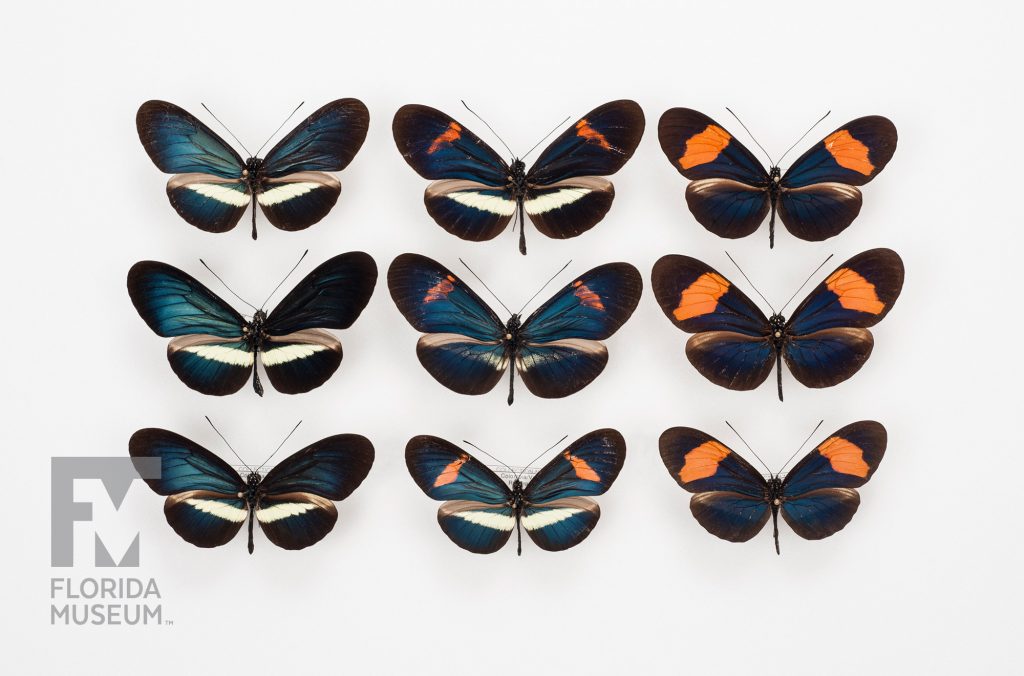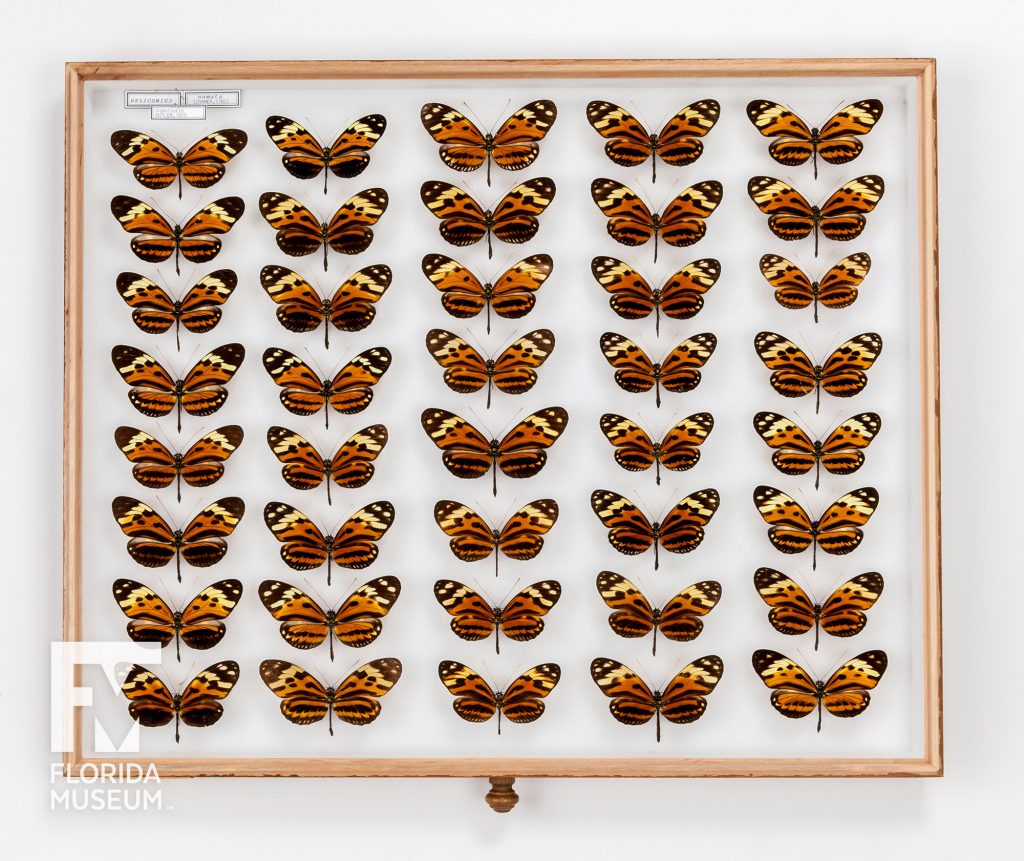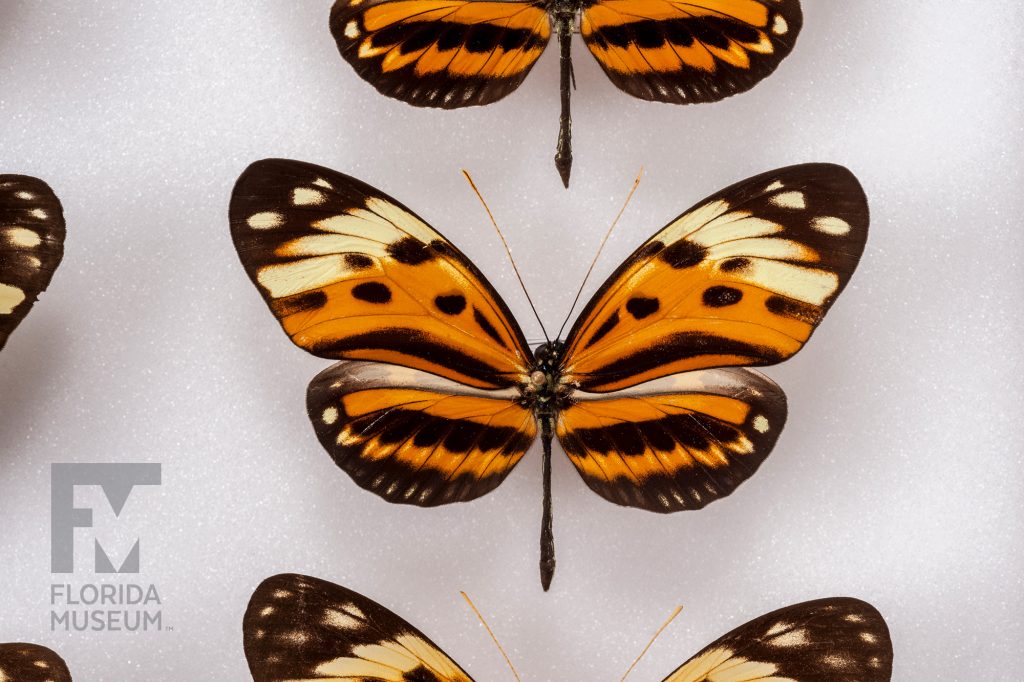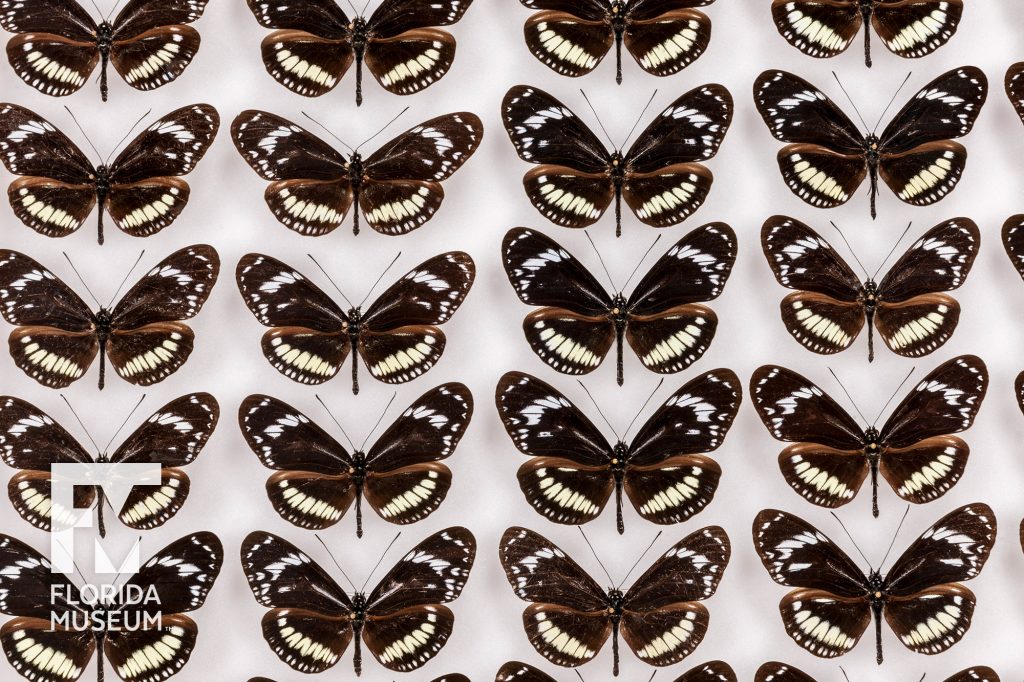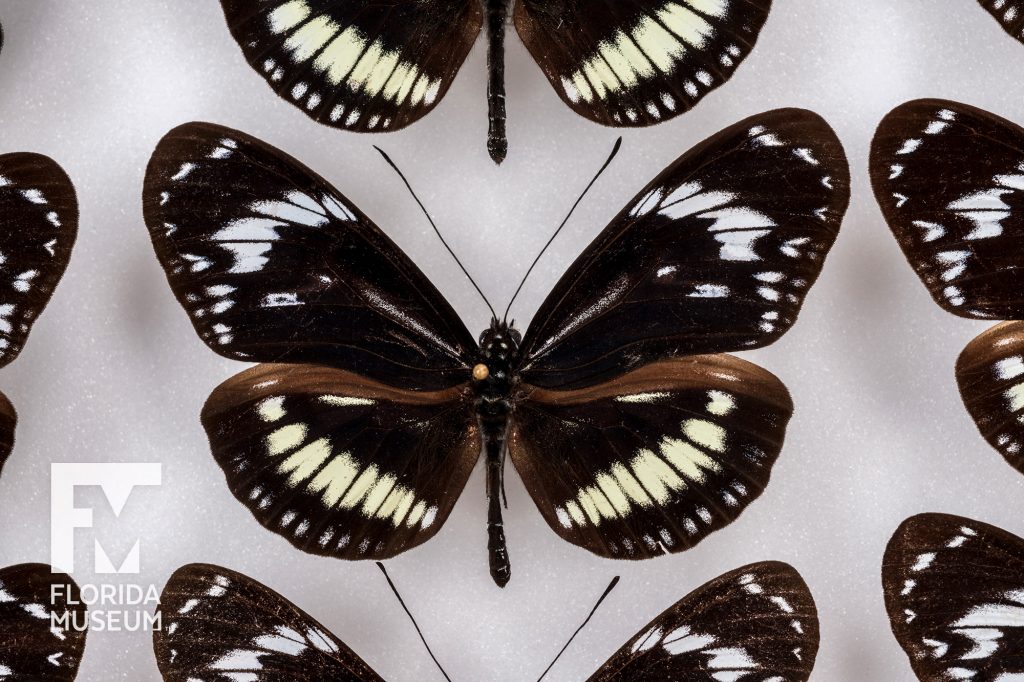Heliconius Butterflies are a model group for studying evolution of wing patterns due to the vast variations within the group. In 2002, Museum received Neukirchen’s Collection that contained every species and subspecies of this important genus.
Summary
Heliconius Butterflies (various species)
From the Neotropics
From Walter Neukirchen’s Collection
Collection
Story
The Walter Neukirchen Collection of Heliconius Butterflies at the McGuire Center for Lepidoptera and Biodiversity, Florida Museum of Natural History, is the most complete and remarkable collection of these butterflies ever compiled by a single researcher. The collection is both a wonderful resource for scientists, with virtually all known Heliconius species and geographic races represented, as well as being aesthetically beautiful, with its perfectly prepared and curated specimens a tribute to this outstanding group of butterflies.
Heliconius butterflies are known commonly as longwings, in reference to their elongate wings, or Passion Vine butterflies, since the caterpillars feed exclusively on Passion Vine plants. The adults are relatively common, large and slow-flying. With their brightly colored wings, with splashes of red, yellow, orange or blue on a black background, they are highly conspicuous as they fly in sunny areas or along the borders of tropical forests. These bright wing patterns are an attractive signal to mates, but also a warning to predators to stay away, since the adult butterflies have protective chemicals that make them taste unpleasant.
Scientists recognize 48 species of Heliconius, most of which show dramatic changes in their wing patterns from one region to another. However, scientists know that these very different forms are in fact the same species, since they freely hybridize where they meet and produce offspring with combinations of the parental wing patterns.
In contrast, some distinct species that fly together can be exceedingly similar, as a result of the evolutionary process known as Müllerian mimicry. Different Heliconius species have converged on the same warning color patterns to more quickly educate predators to avoid them. However, differences in wing shape, microscopic structures and genetics can be used to separate similar, mimetic species.
Because it is so comprehensive, the Walter Neukirchen Collection has proven invaluable in several recent studies. Scientists have used specimen localities to map the diversity of Heliconius species and study how that diversity evolved. We have also been able to extract DNA from specimens to help demonstrate that what was previously thought to be one species, is actually two species. The beautifully preserved specimens are ideal subjects for photography and have been used to illustrate the first book on the evolution and biology of these fascinating butterflies, published just a few months ago, providing an inspiration for the next generation of butterfly researchers.
Keith Willmott
Associate Curator, McGuire Center for Lepidoptera and Biodiversity*
Florida Museum of Natural History
Exhibit
On display Sept. 23, 2017-Jan. 7, 2018, Rare, Beautiful & Fascinating: 100 Years @FloridaMuseum celebrated the Museum’s rich history. Each Museum collection was asked to contribute its most interesting items and share the stories that make them special. Though the physical exhibit is closed, this companion website remains online, providing an opportunity to experience the Florida Museum’s most treasured specimens.
Exhibit Area: Objects Tell Stories
Theme: Evolution
 Want to see more? Explore more than 300 breathtaking color photos of plants, animals, fossils and cultural heritage materials from the Florida Museum of Natural History’s collections in the award-winning book All Things Beautiful available from the University Press of Florida.
Want to see more? Explore more than 300 breathtaking color photos of plants, animals, fossils and cultural heritage materials from the Florida Museum of Natural History’s collections in the award-winning book All Things Beautiful available from the University Press of Florida.
*This title was accurate at the time the exhibit was on display in 2017. Please visit the collection website to verify current staff and student information.
